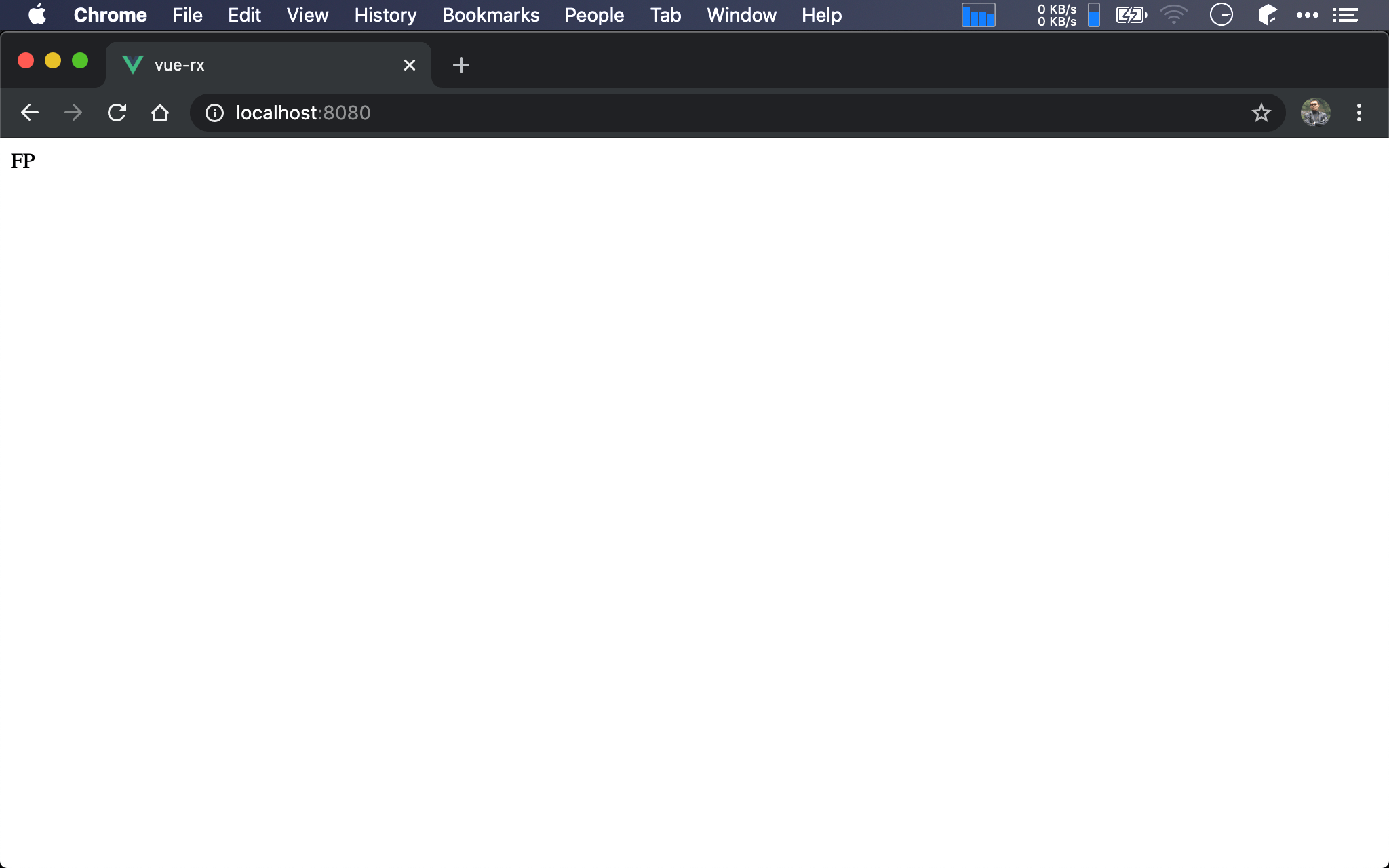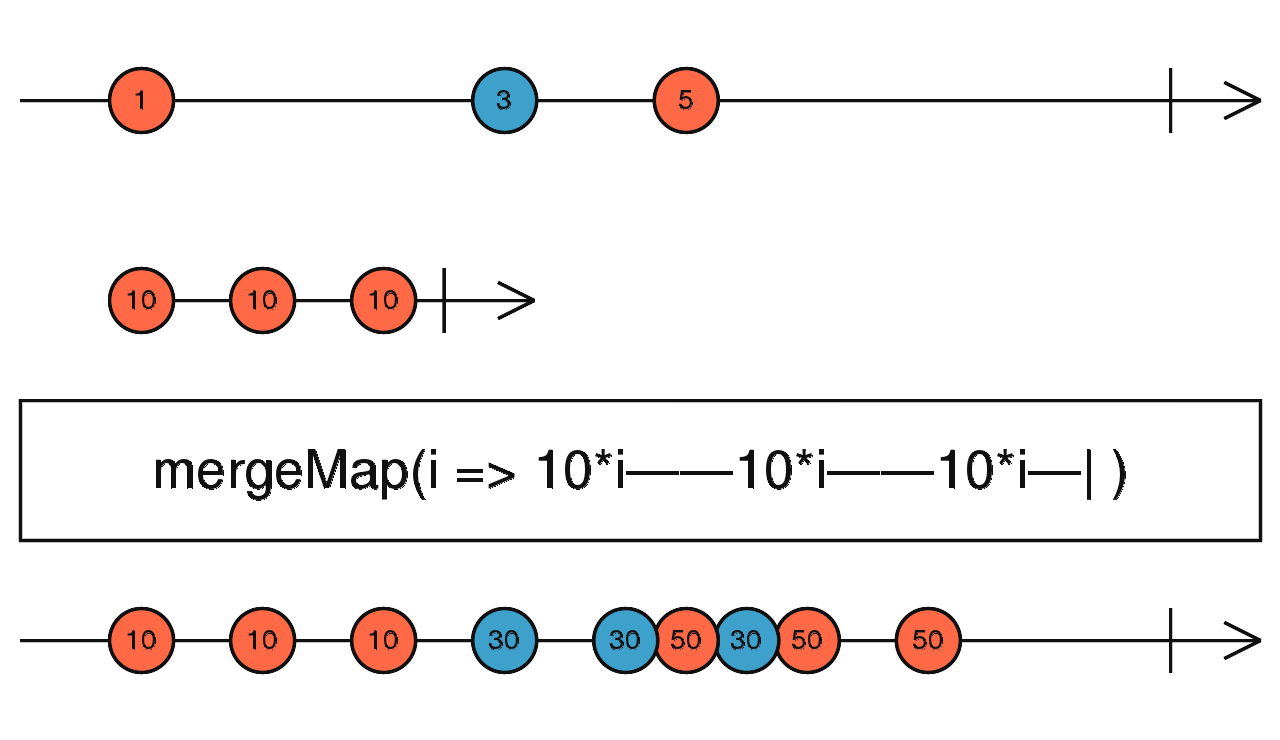由於 RESTful API 特性,實務上常會遇到無法單一 API 就能拿到結果,必須連續呼叫多次 API,本文分別以 Async Await、Promise Chain、Ramda 與 RxJS 示範,可比較其背後不同 Mental Model 。
Version
macOS Catalina 10.15.4
WebStorm 2020.1.1
Vue 2.6.11
Ramda 0.0.27
RxJS 6.5.5
Browser

顯示 book id 為 1 的 category。
API
http://localhost:3000/categories/:id 能回傳該 categoryId 的 category,但 categoryId 必須先呼叫 http://localhost:3000/books/:id 取得 categoryId。
也就是 API request 有其相依性,必須先呼叫某 API 取得其值,再根據該值呼叫其他 API。
Async Await
<template>
<div>{{ category }}</div>
</template>
<script>
import axios from 'axios'
let fetchCategoryId = async x => {
let { data: { categoryId }} = await axios.get(`http://localhost:3000/books/${x}`)
return categoryId
}
let fetchCategory = async x => {
let { data: { category }} = await axios.get(`http://localhost:3000/categories/${x}`)
return category
}
let mounted = async function() {
let categoryId = await fetchCategoryId(1)
this.category = await fetchCategory(categoryId)
}
export default {
name: 'App',
data:() => ({
category: ''
}),
mounted
}
</script>
第 8 行
let fetchCategoryId = async x => {
let { data: { categoryId }} = await axios.get(`http://localhost:3000/books/${x}`)
return categoryId
}
使用 Async Await 呼叫 API 取得 categoryId 回傳。
13 行
let fetchCategory = async x => {
let { data: { category }} = await axios.get(`http://localhost:3000/categories/${x}`)
return category
}
使用 Async Await 呼叫 API 取得 category 回傳。
19 行
let categoryId = await fetchCategoryId(1)
this.category = await fetchCategory(categoryId)
使用 await 呼叫 fetchCategoryId() 先取得 categoryId,再將 categoryId 傳入 fetchCategory() 以 await 取出寫入 category data。
我們可發現
async await寫法雖然直覺,但必須categoryId這種 intermediate variable 作銜接,也常因為要找可讀性高的 variable 名稱而想破頭
Promise Chain
<template>
<div>{{ category }}</div>
</template>
<script>
import axios from 'axios'
let fetchCategoryId = x => axios.get(`http://localhost:3000/books/${x}`)
.then(x => x.data.categoryId)
let fetchCategory = x => axios.get(`http://localhost:3000/categories/${x}`)
.then(x => x.data.category)
let mounted = function() {
fetchCategoryId(1)
.then(fetchCategory)
.then(x => this.category = x)
}
export default {
name: 'App',
data:() => ({
category: ''
}),
mounted
}
</script>
第 8 行
let fetchCategoryId = x => axios.get(`http://localhost:3000/books/${x}`)
.then(x => x.data.categoryId)
使用 Promise Chain 呼叫 API 取得 categoryId 回傳。
11 行
let fetchCategory = x => axios.get(`http://localhost:3000/categories/${x}`)
.then(x => x.data.category)
使用 Promise Chain 呼叫 API 取得 category 回傳。
15 行
fetchCategoryId(1)
.then(fetchCategory)
.then(x => this.category = x)
使用 Promise Chain 在呼叫 fetchCategoryId() 之後,在 then() 中再呼叫 fetchCategory(),最後再寫入 category side effect。
Ramda
<template>
<div>{{ category }}</div>
</template>
<script>
import axios from 'axios'
import { andThen, concat, path, pipe, toString } from 'ramda'
let fetchCategoryId = pipe(
toString,
concat(`http://localhost:3000/books/`),
axios.get,
andThen(path(['data', 'categoryId']))
)
let fetchCategory = pipe(
toString,
concat(`http://localhost:3000/categories/`),
axios.get,
andThen(path(['data', 'category']))
)
let mounted = async function() {
pipe(
fetchCategoryId,
andThen(fetchCategory),
andThen(x => this.category = x)
)(1)
}
export default {
name:'App',
data:() => ({
category:''
}),
mounted
}
</script>
第 9 行
let fetchCategoryId = pipe(
toString,
concat(`http://localhost:3000/books/`),
axios.get,
andThen(path(['data', 'categoryId']))
)
使用 Ramda 的 function 實現 Promise Chain。
16 行
let fetchCategory = pipe(
toString,
concat(`http://localhost:3000/categories/`),
axios.get,
andThen(path(['data', 'category']))
)
使用 Ramda 的 function 實現 Promise Chain。
24 行
pipe(
fetchCategoryId,
andThen(fetchCategory),
andThen(x => this.category = x)
)(1)
使用 Ramda 的 function 實現 Promise Chain。
Ramda 提供
pipe()與andThen()執行 asynchronous,但本質仍是 Promise Chain,只是以 Function Pipeline 形式而非 Method Chaining,另外 callback 部分則使用 Ramda 的 function 盡量 point-free。
RxJS
<template>
<div>{{ category }}</div>
</template>
<script>
import { ajax } from 'rxjs/ajax'
import { pluck } from 'rxjs/operators'
let fetchCategoryId$ = x => ajax(`http://localhost:3000/books/${x}`).pipe(
pluck('response', 'categoryId')
)
let fetchCategory$ = x => ajax(`http://localhost:3000/categories/${x}`).pipe(
pluck('response', 'category')
)
let mounted = function() {
fetchCategoryId$(1)
.subscribe(x => {
fetchCategory$(x)
.subscribe(x => this.category = x)
})
}
export default {
name:'app',
data:() => ({
category:''
}),
mounted
}
</script>
第 9 行
let fetchCategoryId$ = x => ajax(`http://localhost:3000/books/${x}`).pipe(
pluck('response', 'categoryId')
)
使用 RxJS 內建的 ajax() 取代 Axios 讀取 API,與 axios.get() 不同的是回傳 Promise,而 ajax() 回傳 Observable,方便後續 RxJS 使用 operator。
RxJS 與 Axios 另一點不同是 Axios 將回傳資料藏在 data property,而 RxJS 則在 response proeprty 內,因此使用 pluck('response', 'categoryId') 回傳。
13 行
let fetchCategory$ = x => ajax(`http://localhost:3000/categories/${x}`).pipe(
pluck('response', 'category')
)
使用 RxJS 的 ajax() 呼叫 API 取得 category 回傳,型別為 Observable。
18 行
fetchCategoryId$(1)
.subscribe(x => {
fetchCategory$(x)
.subscribe(x => this.category = x)
})
由於 fetchCategoryId$() 回傳 Observable,要在 subscribe() 內的 x 才能取出 categoryId,因此在 subscribe() 再次呼叫 fetchCategory$() ,並在其 subscribe() 寫入 category data。
這種 Higher Order Observable 很容易寫出 Nested Subscribe,可讀性很差,跟 Callback Hell 差不多。
<template>
<div>{{ category$ }}</div>
</template>
<script>
import { ajax } from 'rxjs/ajax'
import { mergeMap, pluck } from 'rxjs/operators'
let fetchCategoryId$ = x => ajax(`http://localhost:3000/books/${x}`).pipe(
pluck('response', 'categoryId')
)
let fetchCategory$ = x => ajax(`http://localhost:3000/categories/${x}`).pipe(
pluck('response', 'category')
)
let subscriptions = _ => {
let category$ = fetchCategoryId$(1).pipe(
mergeMap(fetchCategory$)
)
return { category$ }
}
export default {
name:'App',
subscriptions
}
</script>
18 行
let category$ = fetchCategoryId$(1).pipe(
mergeMap(fetchCategory$)
)
fetchCategoryId$() 回傳已是 Observable,又接著呼叫 fetchCategory$() 亦回傳 Observable,因此預期將會是 Higher Order Observable。
Observable 並不像 Promise 的 then() 會自動攤平 Promise,必須明確使用 mergeMap() 使 Observable 攤平。
mergeMap()
將兩層 Observable 攤平成一層 Observable

22 行
return { category$ }
最後回傳 category$ Observable 供 data binding。
可發現 Observable 與 Promise 相比,Promise 的
then()同時具有多重角色,兼具map()、mergeMap()與subscribe()功能,但 RxJS 則必須明確使用正確 operator,這也符合 FP 習慣
Conclusion
- Async Await 最符合大部分人習慣 Imperative 寫法,唯
await會 block 目前執行等待 asynchronous 回傳,若資料量大會明顯感覺延遲,須小心使用 - Promise Chain 的
then()兼具map()、mergeMap()與subscribe()特性,因此用起來比較簡單,但缺點是只有一個then()能用,而不像 RxJS 有 100 多個 operator,可在各式各樣情境靈活使用 - Promise Chain 雖然已經有 FP 味道,但卻使用了 Method Chaining
- Ramda 雖使用了 Function Pipeline,但因其 synchronous 本質,所以每行都必須使用
andThen()才支援 Promise,整體略顯累贅 - RxJS 寫法最為精簡,且提供豐富 operator 可用
- 當寫出 Nested Subscribe 時,就是該使用
switchMap()、exhaustMap()與mergeMap()攤平時刻,執於要使用哪個 operator,要依實際狀況而定
Reference
TRAN SON HOANG, Handle Multiple API request in Angular using mergeMap and forkJoin to Avoid Nested Subscription
RxJS, pluck()
RxJS, flatMap()
RxJS, mergeMap()